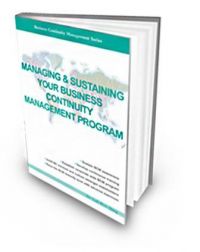Business Continuity Plan (BC Plan)
1. A Business Continuity Plan or BC Plan comprises of clearly defined and documented procedures and information for use when a disaster occurs.

 
| ||||||||||||||||||||||||||||||||||||
2. Documented procedures that guide organizations to respond, recover, resume, and restore to a pre-defined level of operation following disruption.

Notes: : Typically this covers resources, services and activities required to ensure the continuity of critical business functions.
(Source: ISO 22301:2012 – Societal Security – Business Continuity Management Systems - Requirements) - clause 3.6

3. Documented collection. of procedures and information that is developed, compiled and maintained in readiness for use in an incident to enable an organization to continue to deliver its critical activities at an acceptable pre-defined level.
(Source: AE/HSC/NCEMA 7000:2021)

4. Documents describing the roles, responsibilities and actions necessary to resume business processes following a disruption. The Business Continuity Plan will provide a defining structure for and exert a major influence upon the development of IS continuity plans. Its scope both encompasses and exceeds Business Continuity Management (BCM) and is normally a business responsibility. (Source: ENISA - the European Network and Information Security Agency. BCM & Resilience Glossary)
5. Documented collection of procedures and information that is developed, compiled and maintained in readiness for use in an incident to enable an organization to continue to deliver its critical activities at an acceptable pre-defined level.
(Source: British Standard BS25999-1:2006 Code of Practice for Business Continuity Management)
6. A clearly defined and documented operation plan that guides organizations to reduce, respond, recover, resume, restore and return to full recovery. Typically it covers key personnel, resources, services and actions required to ensure critical business functions can continue within planned levels of disruption.
(Source: Singapore Standard 540 - SS 540:2008)
7. A clearly defined and documented plan.
(Source: Business Continuity Institute - BCI)
8. An ongoing process supported by senior management and funded to ensure that the necessary steps are taken to identify the impact of potential losses, maintain viable recovery strategies and plans, and ensure the continuity of operations through personnel training, plan testing and maintenance.
(Source: ASIS International - ASIS International)
9. A collection of procedures and information that is developed,compiled and maintained in readiness for use in the event of an emergency or disaster. (Associated terms: Business Recovery Plan, Disaster Recovery Plan, Recovery Plan).
(Source: HB 221:2004 Business Continuity Management)
10. A collection of documents containing procedures, resources and information that is developed, compiled and maintained in readiness for use in the event of an emergency or disaster.
(Source: Malaysia BCM Standard MS1970:2007)
11. A collection of procedures and information that is developed, compiled and maintained in readiness for use in the event of a disruption to an organization or its value chain.
NOTE: Business continuity planning is often used to refer to those activities associated with preparing documentation to assist in the continuing availability of property, people and information and processes.
(Source: AS/NZS 5050.1 Australian and New Zealand Standards for business continuity management.
Part 1: Business continuity management system specification)
12. A collection of procedures and information that is developed, compiled and maintained in readiness for use in the event of a disruption to an organization or its value chain.
NOTE: Business continuity planning is often used to refer to those activities associated with preparing documentation to assist in the continuing availability of property, people and information and processes.
(Source: AS/NZS 5050.2 Australian and New Zealand Standards for business continuity management.
Part 2: Business continuity management practice standard)
